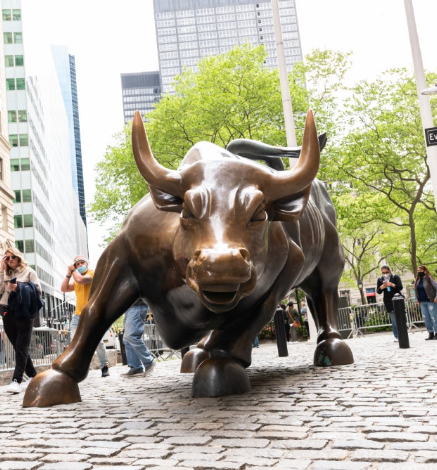Understanding Bull Markets: What They Mean and How They Affect Investors

A bull market is a term frequently used in the world of investing, referring to a period when stock prices are on the rise, the economy is expanding, and investor confidence is high. But what exactly does a bull market mean, and how does it impact investors? Let’s take a closer look.
What is a Bull Market?
A bull market describes a long-lasting period of increasing stock prices, which typically signals a period of economic growth. The term “bull” refers to the way a bull attacks by thrusting its horns upward, symbolizing the upward movement of stock prices and the positive sentiment of investors. It’s used not only for the stock market but can also apply to real estate, commodities, and even cryptocurrencies.
During a bull market, investors are optimistic about the future, and the market shows steady price increases. Consumer spending rises, unemployment rates fall, and wages typically increase, all contributing to the economic growth seen in such periods.
Key Features of a Bull Market
Several factors characterize a bull market:
- High Investor Confidence: As stock prices rise, investors become more confident in their investments. This confidence encourages further buying, which leads to continued growth in the market.
- Rising Prices: Increased wages and economic expansion lead to higher consumer spending, which drives up demand for goods and services. This spending creates inflation, but also boosts economic growth.
- Economic Expansion: Businesses start to invest more in their future during a bull market. This often means expanding operations, hiring more employees, and increasing wages, which all contribute to a thriving economy.
- Lower Unemployment: As companies grow, they hire more workers, which leads to a decrease in unemployment. This trend is often observed in bull markets, as businesses need additional employees to support their growth.
Why Do Bull Markets Occur?
Bull markets typically coincide with a period of economic improvement, driven by factors like increased consumer spending, corporate earnings growth, and robust business strategies. As companies generate more income, they invest in emerging technologies and expand operations, contributing to a more dynamic and prosperous market.
Additionally, policy changes, such as a new government offering business-friendly policies, can spark a bull market. When interest rates are lowered, taxes are reduced, or regulations are eased, these actions can boost investor optimism and lead to significant market growth.
How to Identify a Bull Market
There are a few key indicators of a bull market:
- Sustained Rise in Stock Prices: The most obvious sign of a bull market is a continuous rise in stock prices. As businesses perform well and earnings increase, investors begin to buy more shares, driving prices higher.
- Increased Investor Demand: As stock prices rise, more investors are attracted to the market, hoping to capitalize on the upward trend. This increase in demand fuels further growth in asset prices.
How Long Do Bull Markets Last?
Bull markets can vary in length, but on average, they last about 5.5 years. The longest bull market in history began in 2009 and lasted until 2020. While it’s difficult to predict when a bull market will end, signs such as rising inflation, rapidly increasing prices, or changes in investor sentiment can indicate the market is nearing its peak.
While it’s impossible to pinpoint the exact end of a bull market until after it occurs, investors continue to monitor the market for potential signals of a downturn.
Bull vs. Bear Markets: The Key Differences
Bull and bear markets represent two opposite sides of market cycles, and there are several key differences between the two:
- Investor Psychology: In a bull market, investor sentiment is positive, driving prices higher. Conversely, during a bear market, pessimism dominates, and investors pull their money out of the market, which causes prices to drop.
- Supply and Demand: Bull markets are characterized by high demand for securities and limited supply. Investors are eager to buy, and there are fewer sellers, which leads to higher prices. In a bear market, the opposite occurs—there are more sellers than buyers, leading to falling prices.
- Economic Impact: Bull markets are typically associated with a growing economy, where consumers are spending more, businesses are expanding, and unemployment is low. Bear markets, on the other hand, usually coincide with economic contraction, lower consumer spending, and rising unemployment.
The Bottom Line
A bull market is a period characterized by rising stock prices and investor optimism. It’s often driven by economic expansion, low unemployment, increasing wages, and high investor confidence. These markets provide opportunities for investors to see significant gains, but they also come with risks, particularly if inflation rises too quickly or if the market becomes overheated.
By understanding the dynamics of a bull market, investors can make more informed decisions and better navigate both market booms and downturns. While predicting the end of a bull market is challenging, recognizing the signs early can help investors take advantage of the opportunities a bull market offers before it turns.




